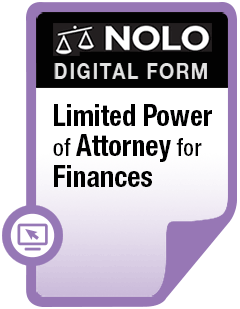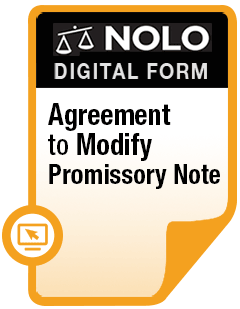Learn the basics of gap insurance—what it is, who needs it, and how to buy it.
Gap insurance, more accurately called "gap protection," covers the difference between what you owe on your car loan and how much the car is worth. However, not everyone needs gap insurance (also called "totaled insurance"). Do you?
What Is Gap Insurance?
For many drivers, a standard auto insurance policy provides enough protection to cover the cost of repairs or replacement if their car is damaged or stolen. However, if you total your car and the car's actual cash value is lower than the amount you owe on your loan balance or lease, that difference, or "gap," isn't covered by insurance.
Your insurance company won't pay out more than the car is worth (before it was damaged). So, you'll be responsible for paying that amount.
With Gap Insurance, You're Really Getting "Gap Protection"
Gap protection (often referred to as "insurance" even though it's actually a debt cancellation agreement) is designed to cover this difference between auto value and auto loan. However, before you pay for gap protection, consider how a gap occurs and how you can close it.
Why There's a Gap
Negative equity (when your car is worth less than what you owe on it) puts car buyers and lessees at risk because an auto insurance policy won't pay out more for repairs or replacement than the auto is worth.
Here's an example of how negative equity happens:
| Auto loan (5 years @6%): | $25,000 | |
| Loan balance (after one year): | $20,580 | |
| Car's actual value at time of loss: | $19,000 | |
| Insurance deductible: | $500 | |
| Amount insurance company pays: | $18,500 | |
| Gap (loan balance—insurance payment): | $2,080 |
How Do You End Up With a Gap?
Often, borrowers find themselves "upside down" (owing more than the auto is worth) through a combination of factors, including:
- Taking out a loan with an extended term. A longer loan term not only means lower payments, it means you build equity in the vehicle much more slowly.
- Depreciation. All cars depreciate, but some lose value much more quickly than others. According to some estimates, certain cars lose as much as 30% of their value within the first three months.
- Putting little or no money down. If you finance all or nearly all the price of the car, you could be upside down as soon as you drive home, because a new car depreciates most at the moment it becomes "used."
- Borrowing more than the purchase price. Borrowers who finance the tax, license, and registration, or extras such as service plans and extended warranties, will find themselves upside down before leaving the lot.
Gap Insurance Protection: Should I Get It?
You don't need to consider gap protection if, during your loan term or lease, you will not owe more than your car is worth. To determine whether or not you're likely to be upside down and for how long, research the expected depreciation rate for your car. Kelley Blue Book online will tell you how much last year's model is worth today.
Then, using an online auto loan calculator, such as the Auto Loan Calculator at www.Bankrate.com, calculate at what rate you will build equity in your vehicle. Use the two tools together to determine your equity (or lack thereof) at various points during the loan term.
Before you buy gap protection, make sure you're not already covered. It's common for leasing companies to include the coverage in the lease agreement for their own protection. And some auto insurance policies include gap protection as part of their standard coverage.
How to Buy Gap Protection
Gap coverage is available in most, but not all, states.
Gap protection from the lender. Most often, car buyers purchase gap coverage through the lender financing their purchase, though insurance companies and online vendors offer it, too.
Gap protection from dealers and vendors. If purchased through any source other than your insurance company, the cost of gap coverage is typically a one-time charge in the hundreds of dollars.
Gap protection from your insurance company. However, if you buy gap coverage from your auto insurance company, it will most likely be billed as a small addition to your regular premium. Because it's not a one-time charge, you will continue paying for the coverage each time you pay your premium, until you cancel it. So, don't forget to calculate, now and then, whether you've closed the gap and can forgo the additional expense.
Shop around. While it might appear that all gap protection is the same, some products offer more than others. For example, some types of coverage reimburse your insurance deductible, and some offer vehicle replacement, even if the price of the car has increased. Because of the differences, you can't shop by price alone.
Here are other things to look out for when shopping for gap protection:
- As is consistent with their pricing on auto loans, car dealers tend to charge more for gap protection than some other sources do.
- If you buy online, research the vendor before sending money or providing personal and payment information.
- Whichever product you choose, make sure it covers you for all types of loss, including natural disaster, theft, and accident.
- To avoid the need for gap coverage, make car buying and financing choices that put you right-side-up (rather than upside down) from the start.
More Information
To learn more about cars and driving, as well as other legal topics affecting the average American, get Nolo's Encyclopedia of Everyday Law, by the Editors of Nolo.
Talk to a Lawyer
Need a lawyer? Start here.
How it Works
- Briefly tell us about your case
- Provide your contact information
- Choose attorneys to contact you
- Briefly tell us about your case
- Provide your contact information
- Choose attorneys to contact you



